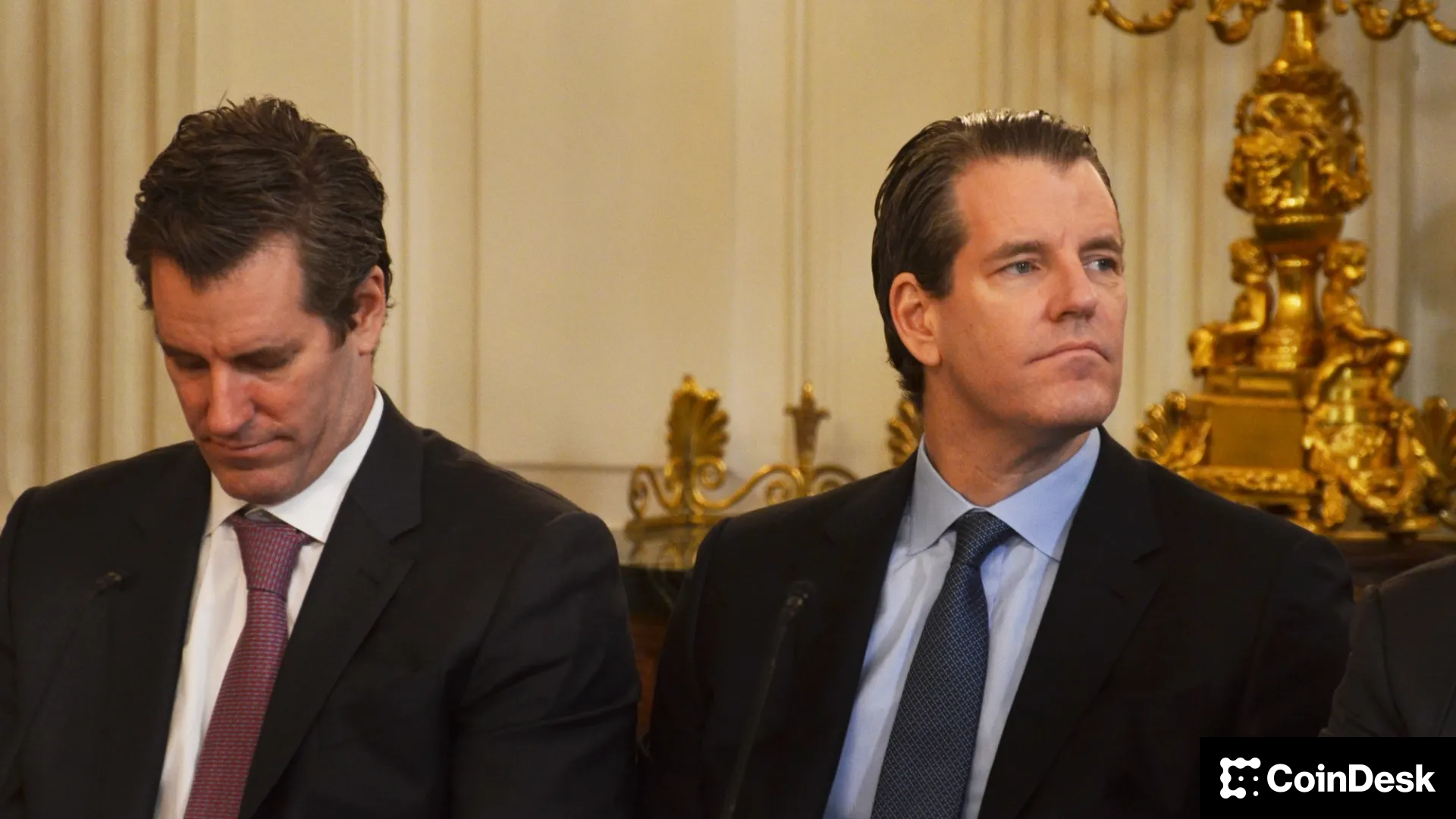Uncategorized
Edith Yeung Sees Big Things to Come for Crypto in Hong Kong

As the co-founder and general partner at early stage venture capital fund Race Capital, Edith Yeung has had a front-row seat on the development of the crypto sector, particularly in Hong Kong, where she was born and raised. Most notably, she was a seed investor in Solana, investing $250,000 when SOL was valued at just $0.04, and also was an early investor in Lightning Network. Since 2017, Yeung has also authored the China Internet report, an influential annual survey of technology trends in China.
Here, Yeung, who will be a speaker at Consensus Hong Kong, discusses Hong Kong’s ongoing development as a crypto hub, her take on China’s stance towards crypto, what she foresees for Solana and one big crypto prediction for 2025.
This series is brought to you by Consensus Hong Kong. Come and experience the most influential event in Web3 and Digital Assets, Feb.18-20. Register today and save 15% with the code CoinDesk15.
Interview has been condensed and lightly edited for clarity.
How do you see crypto regulations developing in HK in 2025? Do you think more crypto companies will become licensed by the SFC in 2025?
It’s exciting to see that Hong Kong now has seven SFC-licensed virtual asset trading platforms. From an investor’s perspective, having a clear licensing regime is a major step forward. Regulatory clarity and predictability are like well-lit roads — they give investors the confidence to drive forward without worrying about unexpected detours.
That said, licensing alone isn’t enough. Liquidity is the other critical piece of the puzzle. Think of a trading platform like a brand-new highway: you can have the smoothest pavement and clearest signs, but if no cars are on it, drivers won’t bother. Similarly, no matter how many licenses you have, if there’s no active trading and liquidity, investors will hesitate to come aboard.
The key for Hong Kong now is to build not just the infrastructure but the traffic flow — because a great platform without liquidity is like an empty highway going nowhere.
What kind of role do you see Hong Kong developing in terms of the crypto sector, especially in relation to the US? What about Asia more broadly?
Hong Kong is the New York of Asia. Exchange Square is basically Wall Street — a 24/7 financial powerhouse with soaring skyscrapers and streets full of traders, investors and bankers with energy that never quits. If you are a crypto builder or investor, you will find many TradFi talents (traders, market makers, etc.) in Hong Kong.
To build a successful TradFi or DeFi company, you need to recruit specific types of talent that are hard to find even in Silicon Valley. Hong Kong boasts a rich financial history, with its stock market origins dating back to 1866 — over 150 years — means there is a deep pool of experienced professionals who can drive innovation and growth in your venture.
What would you say is distinctive about HK/Southeast Asia for crypto compared to the US and Europe?
The U.S. is home to the largest crypto addressable market in terms of institutional investors, regulators and builders. But Asia is home to the highest growth potential for the crypto market. In 2024, half of the top 10 countries in the world ranked by crypto adoption were located in Asia.
With the new Trump administration, the U.S. will continue to set the tone for crypto regulation and institutional adoption (e.g., BlackRock ETF). Asia will follow their lead with its massive usage base that is young and crypto-native.
Do you view China as generally pro or anti-crypto? There’s been a lot of crypto activity there, but at the same time, the government is officially against mining and speculation.
Hong Kong is part of China. Seeing pro-crypto regulation slowly forming in Hong Kong is a great sign and indicator for China. That said, China literally has an army of 220 million retail investors sitting on almost $21 trillion worth of savings. With a lingering property crisis and a meek economy, however, it is very difficult to say when China will open up for crypto business again, as the government focuses on these larger issues.
You were a seed investor in Solana; do you still have your initial investment there? Do you think Solana will continue to attract as much memecoin activity as it did in 2024?
Yes. It was an honor that I got to meet Solana co-founders Anatoly Yakovenko and Raj Gokal and become their seed investor back in March 2018. I am a long-term Solana holder and supporter. What I love about them is their dedication to building and their support for the developer community. The developer energy at the 2024 Breakpoint conference was high not only because of memecoins.
The Firedancer team made huge technical advances last year, and I just love that Anatoly is still head-down geeking out with people like Jump Trading chief science officer Kevin Bowers and his team every day. Even more exciting to me is seeing traditional finance players like Fidelity, Citi and PayPal speaking at Breakpoint about what they are building on Solana. This influx of established players not only validates Solana’s future but also signals that blockchain technology is ready for the masses.
What kinds of companies are you currently looking to invest in and why?
I am a seed investor in Huma Finance — a leader in PayFi building on Solana and a leader in stablecoin infrastructure. In 2024, they did over $2 billion in stablecoin transactions. At Race Capital, we will continue to focus on investing in internet infrastructure. Builders who want to be around long-term do not mind whether it’s an up or down cycle.
What’s something you think will happen in 2025 that will surprise crypto folks?
The establishment of a U.S. Bitcoin Reserve by the end of 2025. The United States is currently the largest holder of Bitcoin, with approximately 207,189 bitcoins. This effort will be bolstered by this massive stockpile, which is now valued at over $20 billion at current prices. This decision is expected to drive up bitcoin prices, prompting other governments around the world to follow suit.
What are you most excited to discuss onstage in Hong Kong?
Hong Kong’s role in building the crypto industry in 2025, China’s love/hate relationship with crypto and perhaps more insights on Solana.
Business
Crypto Trading Firm Keyrock Buys Luxembourg’s Turing Capital in Asset Management Push

Crypto trading firm Keyrock said it’s expanding into asset and wealth management by acquiring Turing Capital, a Luxembourg-registered alternative investment fund manager.
The deal, announced on Tuesday, marks the launch of Keyrock’s Asset and Wealth Management division, a new business unit dedicated to institutional clients and private investors.
Keyrock, founded in Brussels, Belgium and best known for its work in market making, options and OTC trading, said it will fold Turing Capital’s investment strategies and Luxembourg fund management structure into its wider platform. The division will be led by Turing Capital co-founder Jorge Schnura, who joins Keyrock’s executive committee as president of the unit.
The company said the expansion will allow it to provide services across the full lifecycle of digital assets, from liquidity provision to long-term investment strategies. «In the near future, all assets will live onchain,» Schnura said, noting that the merger positions the group to capture opportunities as traditional financial products migrate to blockchain rails.
Keyrock has also applied for regulatory approval under the EU’s crypto framework MiCA through a filing with Liechtenstein’s financial regulator. If approved, the firm plans to offer portfolio management and advisory services, aiming to compete directly with traditional asset managers as well as crypto-native players.
«Today’s launch sets the stage for our longer-term ambition: bringing asset management on-chain in a way that truly meets institutional standards,» Keyrock CSO Juan David Mendieta said in a statement.
Read more: Stablecoin Payments Projected to Top $1T Annually by 2030, Market Maker Keyrock Says
Business
Crypto Trading Firm Keyrock Buys Luxembourg’s Turing Capital in Asset Management Push

Crypto trading firm Keyrock said it’s expanding into asset and wealth management by acquiring Turing Capital, a Luxembourg-registered alternative investment fund manager.
The deal, announced on Tuesday, marks the launch of Keyrock’s Asset and Wealth Management division, a new business unit dedicated to institutional clients and private investors.
Keyrock, founded in Brussels, Belgium and best known for its work in market making, options and OTC trading, said it will fold Turing Capital’s investment strategies and Luxembourg fund management structure into its wider platform. The division will be led by Turing Capital co-founder Jorge Schnura, who joins Keyrock’s executive committee as president of the unit.
The company said the expansion will allow it to provide services across the full lifecycle of digital assets, from liquidity provision to long-term investment strategies. «In the near future, all assets will live onchain,» Schnura said, noting that the merger positions the group to capture opportunities as traditional financial products migrate to blockchain rails.
Keyrock has also applied for regulatory approval under the EU’s crypto framework MiCA through a filing with Liechtenstein’s financial regulator. If approved, the firm plans to offer portfolio management and advisory services, aiming to compete directly with traditional asset managers as well as crypto-native players.
«Today’s launch sets the stage for our longer-term ambition: bringing asset management on-chain in a way that truly meets institutional standards,» Keyrock CSO Juan David Mendieta said in a statement.
Read more: Stablecoin Payments Projected to Top $1T Annually by 2030, Market Maker Keyrock Says
Business
Gemini Shares Slide 6%, Extending Post-IPO Slump to 24%

Gemini Space Station (GEMI), the crypto exchange founded by Cameron and Tyler Winklevoss, has seen its shares tumble by more than 20% since listing on the Nasdaq last Friday.
The stock is down around 6% on Tuesday, trading at $30.42, and has dropped nearly 24% over the past week. The sharp decline follows an initial surge after the company raised $425 million in its IPO, pricing shares at $28 and valuing the firm at $3.3 billion before trading began.
On its first day, GEMI spiked to $45.89 before closing at $32 — a 14% premium to its offer price. But since hitting that high, shares have plunged more than 34%, erasing most of the early enthusiasm from public market investors.
The broader crypto equity market has remained more stable. Coinbase (COIN), the largest U.S. crypto exchange, is flat over the past week. Robinhood (HOOD), which derives part of its revenue from crypto, is down 3%. Token issuer Circle (CRCL), on the other hand, is up 13% over the same period.
Part of the pressure on Gemini’s stock may stem from its financials. The company posted a $283 million net loss in the first half of 2025, following a $159 million loss in all of 2024. Despite raising fresh capital, the numbers suggest the business is still far from turning a profit.
Compass Point analyst Ed Engel noted that GEMI is currently trading at 26 times its annualized first-half revenue. That multiple — often used to gauge whether a stock is expensive — means investors are paying 26 dollars for every dollar the company is expected to generate in sales this year. For a loss-making company in a volatile sector, that’s a steep price, and could be fueling investor skepticism.
-

 Business11 месяцев ago
Business11 месяцев ago3 Ways to make your business presentation more relatable
-

 Fashion11 месяцев ago
Fashion11 месяцев agoAccording to Dior Couture, this taboo fashion accessory is back
-

 Entertainment11 месяцев ago
Entertainment11 месяцев ago10 Artists who retired from music and made a comeback
-

 Entertainment11 месяцев ago
Entertainment11 месяцев ago\’Better Call Saul\’ has been renewed for a fourth season
-

 Entertainment11 месяцев ago
Entertainment11 месяцев agoNew Season 8 Walking Dead trailer flashes forward in time
-

 Business11 месяцев ago
Business11 месяцев ago15 Habits that could be hurting your business relationships
-

 Entertainment11 месяцев ago
Entertainment11 месяцев agoMeet Superman\’s grandfather in new trailer for Krypton
-

 Entertainment11 месяцев ago
Entertainment11 месяцев agoDisney\’s live-action Aladdin finally finds its stars




